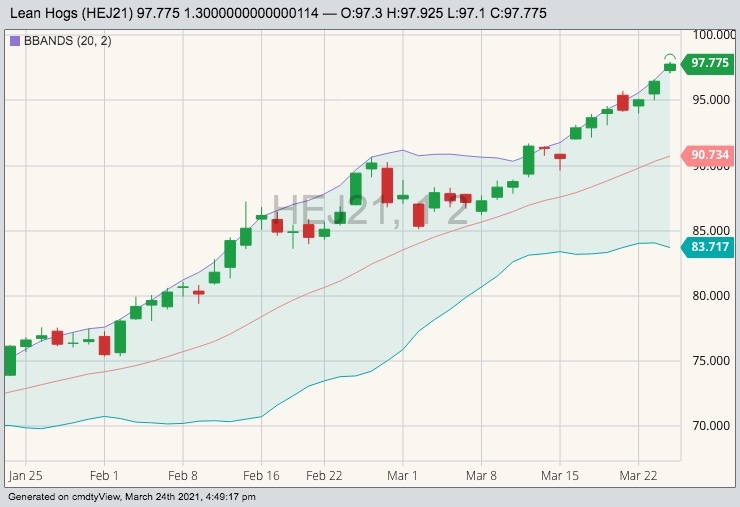Chicago | Reuters — Chicago Mercantile Exchange lean hog futures continued higher on Wednesday, reaching a 6-1/2 year high as optimism for consumer demand increases against tighter hog supplies.
CME April lean hogs closed 1.3 cents higher at 97.775 cents/lb., after notching a life-of-contract high at 97.925 cents, while the most-active June contract added 0.8 cent to 102.05 cents/lb. (all figures US$).
Gains were bolstered by a second day of lower slaughter rates, as just 491,000 head were processes, down 2.4 per cent from a year ago, while Tuesday’s slaughter was also revised lower.
Read Also

Alberta crop conditions improve: report
Varied precipitation and warm temperatures were generally beneficial for crop development across Alberta during the week ended July 8, according to the latest provincial crop report released July 11.
“The run rates faded off today, so you’re still seeing concern about tighter numbers out there,” said Matthew Wiegand, risk management consultant at FuturesOne.
CME live cattle futures were steady-to-firmer, as beef prices leveled off after a five-session climb higher, while pace of slaughter increased with the return of a Schuyler, Nebraska, plant from a week of planned maintenance.
Processors slaughtered 121,000 head, jumping six per cent from a week prior, though still 3.2 per cent less than the same time a year ago.
Boxed beef prices leveled after five sessions of higher prices, with choice adding just 85 cents, to $234.84/cwt, while select cuts trimmed $1.16, to $224.07/cwt, according to the U.S. Department of Agriculture.
CME April live cattle were unchanged at 119.125 cents/lb., while actively traded June futures added 0.25 cent to 120.3 cents. May feeder cattle ended 1.85 cents higher at 147.325 cents/lb.
Cash trade improved to $115 in Nebraska, Kansas and Texas, indicating an effort to attract producer selling, Wiegand said, after rains in the western Great Plains may have made transporting cattle difficult.
“The margins are certainly there to try and pull some cattle forward,” he said. “If we dry back out, get a little more solid roads, I think you’ll see an uptick in stuff wanting to move, especially on the feeder end.”
— Christopher Walljasper reports on agriculture and ag commodities for Reuters from Chicago.















